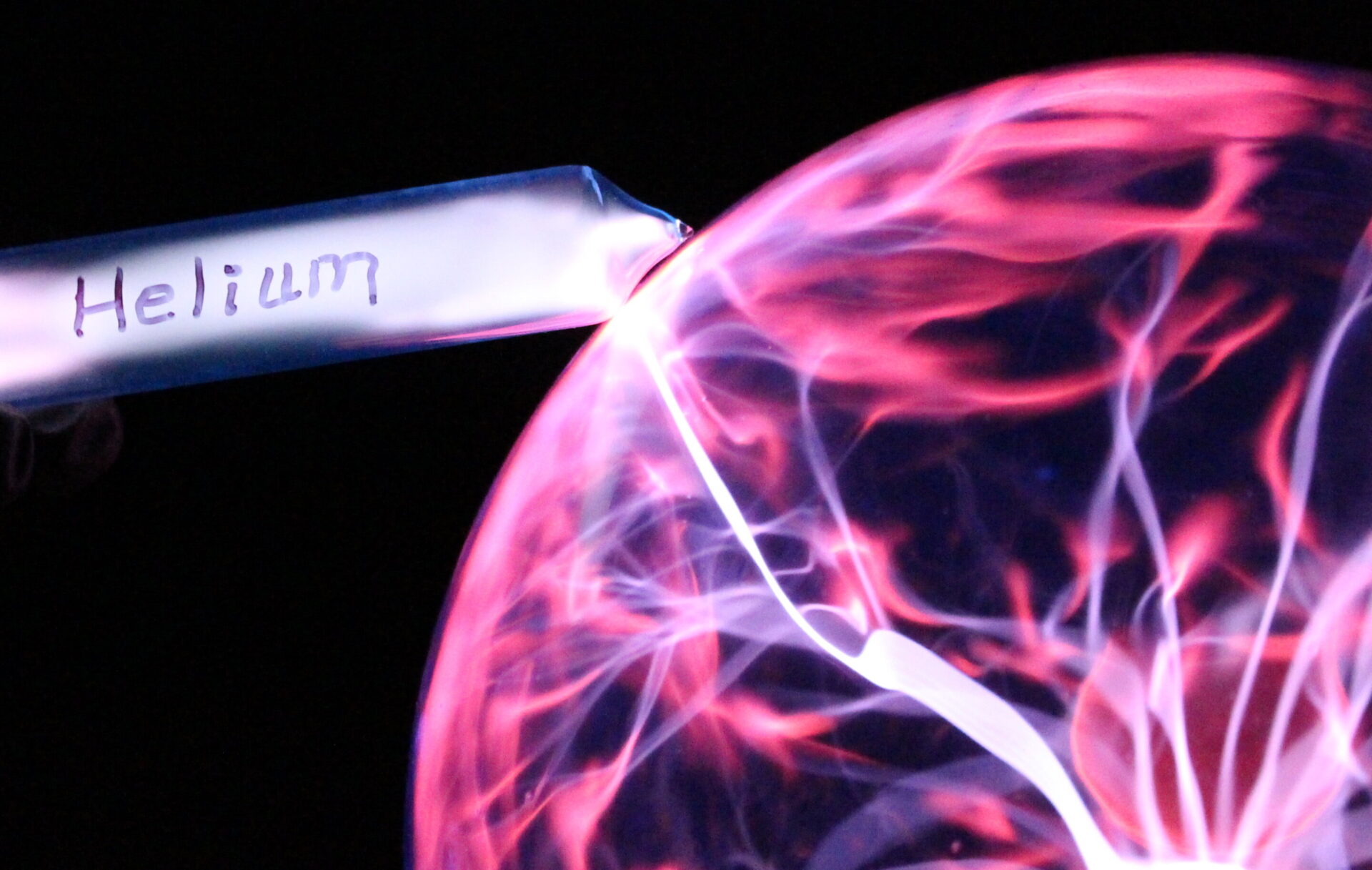
The US has been selling off its helium reserve, established in the 1920s to provide gas for airships – but even so, shortages have been occurring.
Some scientists believe a finite resource that could one day run out should not be used for party balloons.
In the universe as a whole, it is one of the commonest elements, second only to hydrogen in its abundance. On Earth it is relatively rare, and one of the few elements that escapes gravity and leaks away into space.
“All of the other elements we’ve scattered around the globe, maybe we can go digging in garbage dumps to get them back,” says chemist Andrea Sella, of University College London (UCL).
“But helium is unique. When it’s gone it is lost to us forever.”
Helium has the lowest boiling point of any element, at -269C, just a few degrees above absolute zero (-273C).
This makes it of key importance for superconducting magnets used in MRI scanners, which must be supercooled to generate the hugely powerful magnetic fields required.
“We’re going to be looking back and thinking, I can’t believe people just used to fill up their balloons with it, when it’s so precious and unique,” says Cambridge University chemist Peter Wothers, who has called for the end to helium-filled party balloons.
“It is something we need to think about.”
That would mean an end to the old party favourite of breathing in helium from a balloon, and then talking in a high-pitched voices – a result of helium’s fast-moving molecules. But maybe this would be no bad thing, as it can cause dizziness, headaches and even death.
The gas, which is formed by the decay of radioactive rocks in the earth’s crust, accumulates in natural gas deposits and is collected as a by-product of the gas industry.
The United States is currently the world’s biggest supplier, with the bulk of it stored near Amarillo, Texas, in the national helium reserve – which alone accounts for 35% of the world’s current supply.
Go deeper with Bing News on:
Helium
- HNT/USD - Helium US Dollar
The Helium Foundation released a response to Binance.US announcing its plans to delist the HNT trading pairs.The Helium team is... Cryptocurrency gains value through adoption and market speculators.
- Next Cryptocurrency To Explode Friday, April 26 — Wormhole, Near Protocol, Baby Doge Coin, Helium
Discover the top cryptos with explosive potential for today, April 22. Using today's market data, find out what makes these tokens promising.
- Closing Bell: Avanti Helium Corp down on Friday (AVN)
Detailed price information for Avanti Helium Corp (AVN-X) from The Globe and Mail including charting and trades.
- Closing Bell: Avanti Helium Corp up on Thursday (AVN)
Detailed price information for Avanti Helium Corp (AVN-X) from The Globe and Mail including charting and trades.
- PSRHF Pulsar Helium Inc.
Pulsar Helium Inc. engages in the acquisition, exploration, and development of helium properties in the United States and Greenland. Its flagship project is the Topaz Project covering an area of ...
Go deeper with Google Headlines on:
Helium
[google_news title=”” keyword=”Helium” num_posts=”5″ blurb_length=”0″ show_thumb=”left”]
Go deeper with Bing News on:
Helium supply
- The Next Trends In Web3: 2024 And Beyond
We’re on the brink of widespread adoption as more people begin to see that there are real benefits to Web3 technologies.
- NASA administrator has ‘no idea’ why China is going to far side of moon that is ‘always in dark’
NASA Administrator Bill Nelson is being mocked for suggesting the far side of the moon is always "dark" and can't explain why China is interested in it.
- AMGTA releases preliminary research on sustainability of powder and wire additive feedstock
AMGTA has announced the preliminary results of a research project titled ‘Specific Energy of Metal AM Feedstock: A Comparison.’ ...
- Govt. Bans Carrying Gas in Plastic Bags and Balloons
The district administration in Bannu, Khyber Pakhtunkhwa (KP), has prohibited the public from carrying gas in plastic bags and balloons.
- If The Sun Turned Into A Black Hole, Earth Would Continue Its Orbit
People might assume that, were the Sun to be replaced by a black hole, the Earth would be doomed to fall towards it. Black holes are objects with a gravitational force so strong that not even light ...
Go deeper with Google Headlines on:
Helium supply
[google_news title=”” keyword=”helium supply” num_posts=”5″ blurb_length=”0″ show_thumb=”left”]











